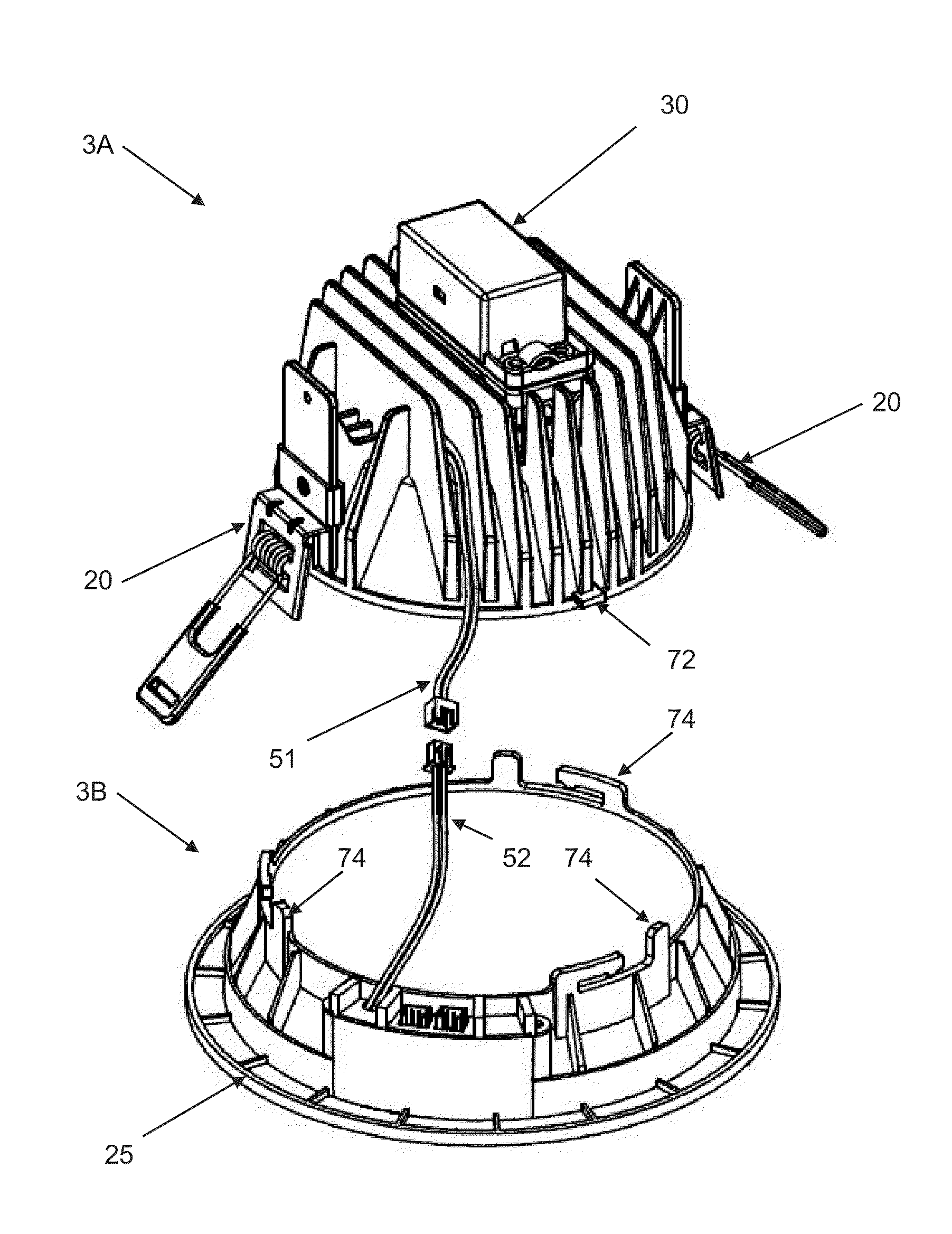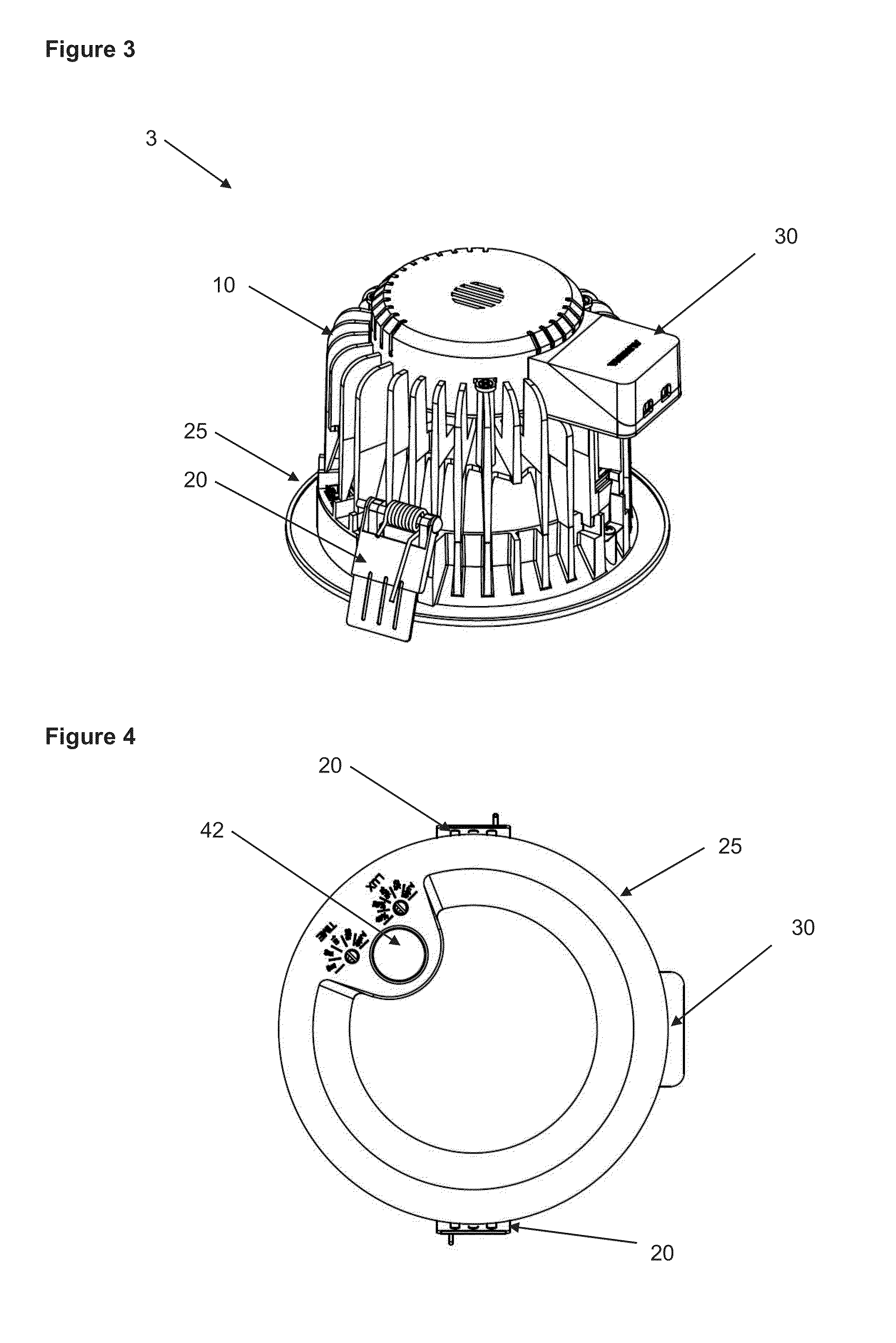Sensor Arrangements
a technology of sensors and luminaires, applied in the field of smart luminaires, can solve the problems of poor aesthetic appearance, difficult decoration and cleaning, and the data collected by the thermostat is limited to the immediate environment of its location, and achieves the effects of simple and less expensive manufacturing, high granularity, and usefulness
- Summary
- Abstract
- Description
- Claims
- Application Information
AI Technical Summary
Benefits of technology
Problems solved by technology
Method used
Image
Examples
Embodiment Construction
[0118]FIG. 1 shows a luminaire 100 of the present invention, comprising a fitting 102 for a lamp and a sensor 104. In FIG. 1, these are shown by the dashed lines to be contained within a housing of luminaire 100, but it is to be understood that sensor 104 may be located, at least partially, on the outside of the housing. Fitting 102 can hold any type of device used to emit light, such as an incandescent lamp, fluorescent lamp, light emitting diode, or LED light engine. The term luminaire is to be understood to encompasses similar terms such as light fixture and light fitting. The term lamp is to be understood to encompass similar terms such as light bulb, light or LED light engine. An LED light engine is a combination of one or more LED modules together with the associated electronic control gear or LED driver. An LED module contains one or more LEDs, together with further components, but excludes the control gear.
[0119]Sensor 104 includes devices able to sense information about the...
PUM
 Login to View More
Login to View More Abstract
Description
Claims
Application Information
 Login to View More
Login to View More - R&D
- Intellectual Property
- Life Sciences
- Materials
- Tech Scout
- Unparalleled Data Quality
- Higher Quality Content
- 60% Fewer Hallucinations
Browse by: Latest US Patents, China's latest patents, Technical Efficacy Thesaurus, Application Domain, Technology Topic, Popular Technical Reports.
© 2025 PatSnap. All rights reserved.Legal|Privacy policy|Modern Slavery Act Transparency Statement|Sitemap|About US| Contact US: help@patsnap.com



